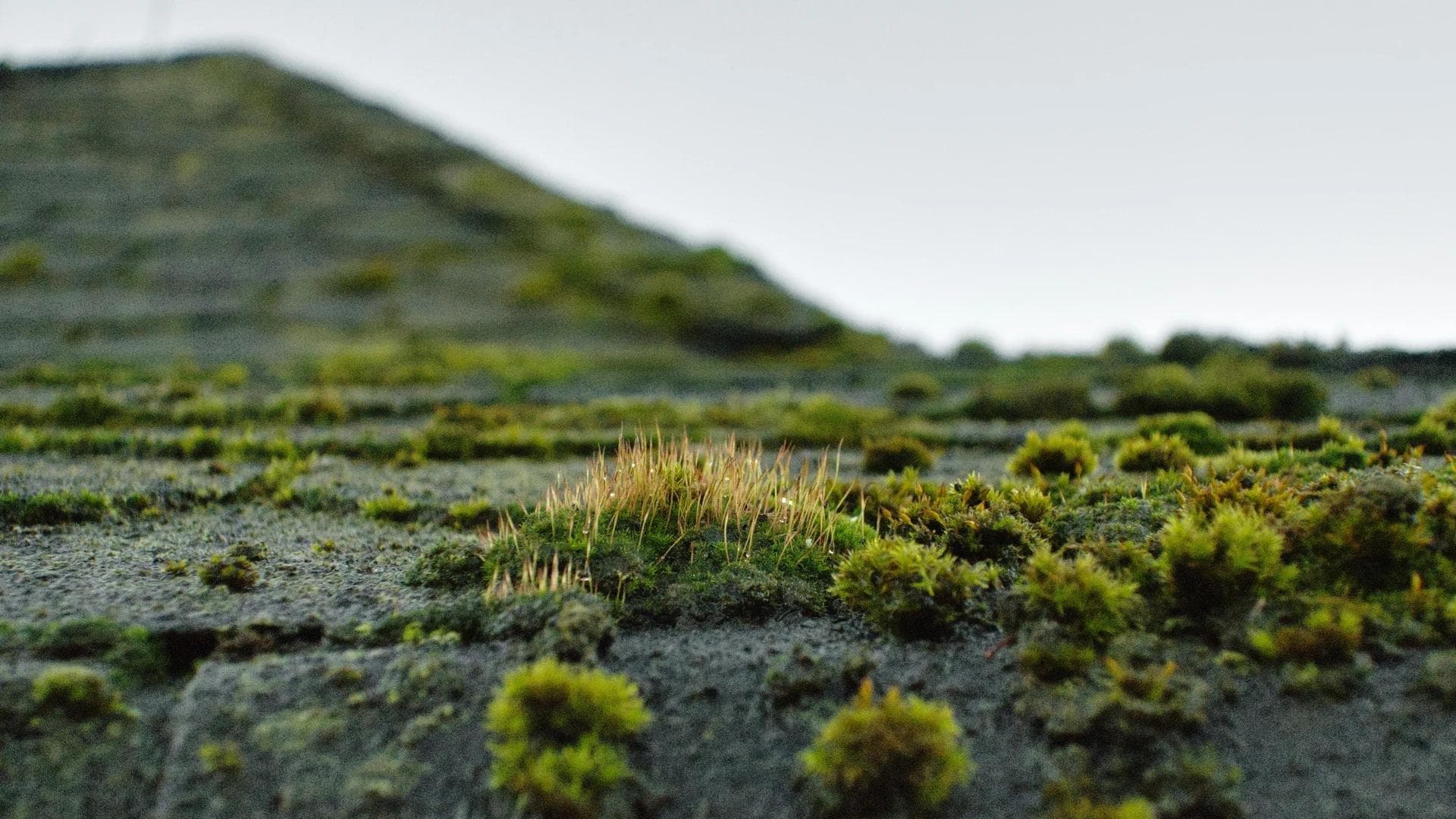
How to Deal with Roof Algae and Moss Growth
Algae and moss thrive in warm, moist conditions, making them common issues for roofs during summer. Left unattended, algae and moss can leave streaks and cause havoc on your roof. This guide explains what these pesky organisms are, and how you can remove them safely, and how to prevent their return
What Are Roof Algae and Moss?
Algae is a photosynthetic bacterium that feeds on moisture and limestone found in some shingles. Growth of algae can be characterized by black or dark green streaks running down your roof.
Moss is a green, fuzzy growth that retains water very well, damaging shingles and underlayment if untreated. Slow growth that creates uplift can eventually cause extensive damage.
Causes of Algae and Moss Growth
Algae and moss flourish in shady, humid, and poorly ventilated areas. These factors can be accentuated by other roof conditions, such as debris buildup and clogged gutters. Asphalt shingles are also more prone to moss and algae than metal or slate.
How to Safely Remove Algae and Moss
Disclaimer: DIY Cleaning can be risky; complex cases should involve your roofing contractor. Avoid climbing onto your roof unless necessary.
- DIY Cleaning Methods:
- Mix water with bleach or vinegar (1:10 ratio); apply with a sprayer and rinse gently.
- Use a soft-bristle brush for moss; avoid pressure washing to prevent shingle damage.
- Eco-Friendly Options:
- Use biodegradable cleaners or baking soda solutions to minimize environmental impact.
- Safety Tips:
- Wear non-slip shoes, use a safety harness, and avoid wet roofs.
- Work on a dry, calm day to prevent slips or chemical runoff.
Preventing Future Algae and Moss Growth
When it comes to prevention, homeowners have an array of options for protecting their roof against algae and moss growth. Consulting your roofing contractor before doing something that can damage your roof is always a good idea.
- Install zinc or copper strips at the roof ridge to release algae-inhibiting ions.
- Trim overhanging branches to increase sunlight and reduce moisture.
- Improve roof ventilation to keep surfaces dry.
- Clean gutters regularly to prevent water buildup.
- Schedule annual roof inspections to catch early growth.
Conclusion
Dealing with roof moss and algae removal involves safe cleaning and preventive measures, ensuring your roof stays durable and good-looking. Minor cases can be resolved with various DIY methods, such as a diluted bleach or vinegar solution, but consulting a professional will ensure your roof is safe.
FAQ
Q: What causes algae and moss to grow on my roof?
A: Algae and moss thrive in humid, shaded areas with poor ventilation. Debris, clogged gutters, and north-facing slopes increase risk.
Q: Can I remove roof algae and moss myself?
A: Yes, for minor cases, use a bleach or vinegar solution and a soft brush. Wear safety gear and avoid pressure washing to prevent damage.
Q: Are there eco-friendly ways to clean my roof?
A: Use biodegradable cleaners or baking soda solutions. Installing zinc or copper strips prevents growth without harsh chemicals.
Q: How can I prevent algae and moss from returning?
A: Trim branches, improve ventilation, clean gutters, and install zinc strips. Annual inspections catch early growth.
Q: When should I hire a professional for roof cleaning?
A: Call a roofing contractor for extensive growth, steep roofs, or damaged shingles to ensure safe, thorough cleaning.
Customer Reviews
With over 1000 home projects completed to date, we know how to treat our customers. This is what they’re saying about us.

